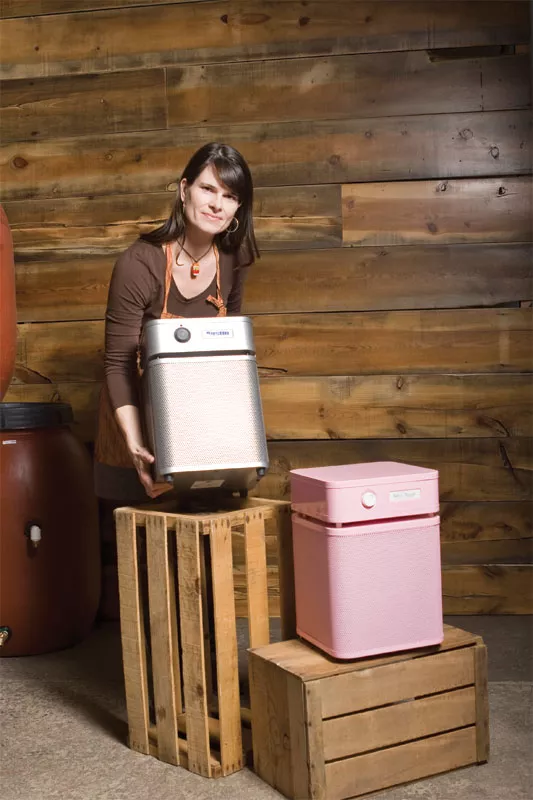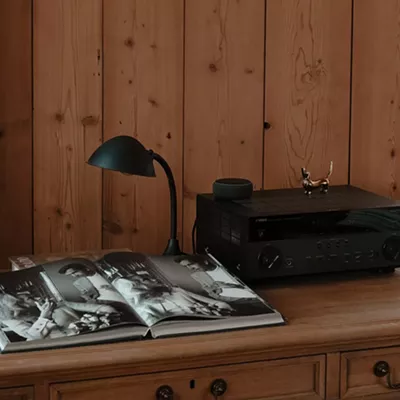We instinctively wrinkle our noses at the whiff of exhaust from an idling car. But we may not notice that indoor air — even in a clean home — can be even more polluted than outdoor air. In fact, pollutants can concentrate in tightly sealed, energy-efficient homes at rates two to five times higher than in the outdoor air, according to the Environmental Protection Agency.
Breathe easy, though, because there are many ways you can improve the air quality in your house.
“If you’re really worried about indoor air pollution, consider buying an air purifier,” writes Rachelle Strauss, author of Household Cleaning Self-Sufficiency, a book about greener house cleaning. Using safe cleaning products and adopting the ‘no shoes’ rule — the majority of dirt comes in on the bottoms of our shoes — are also good places to start, she says. And obviously, she notes, your home should be a smoke-free zone.
In addition to dust and dirt, indoor air can become laced with volatile organic chemicals, known in the air business as VOCs. These chemicals are used in the manufacture of lots of household items, from paint to carpet to the very materials used to build your home. Luckily, there are lots of options for air-conscious consumers.
Clean-air products are nothing new to Bruce Gage and his sister Nadine Sullivan. For the past 16 years, they have been selling eco- and air-friendly products including Marmoleum (linoleum) flooring, low-VOC paints, nontoxic caulks, sealants, adhesives, natural cleaning products, cotton fiber insulation and many other eco-friendly building and home-decorating items at Spokane’s Eco Depot (formerly known as WOW Energy Systems).
“We even have carpet pad made from sunflower oil, not petrochemicals, and plant-based bonding materials for wood flooring. It’s a non-toxic, clean bonding agent that doesn’t pollute indoor air,” says Eco Depot’s architecture specialist Bill Easley.
If you’re not looking for structural changes but just need a fresh, airy update to your space, Sun People Dry Goods may have what you’re looking for. Located at 32 W. Second Ave. in downtown Spokane, Sun People is “an old fashioned mercantile from a green living point of view,” says associate manager Angie Dierdorff.
The store opened in December and sells a wide variety of green cleaning products and housewares — from bedding to kitchen equipment, as well as low-VOC floor and furniture finishes, humidifiers and air cleaners. They are the first authorized dealer in the northwest for Austin Air Filters, a company chosen by FEMA and the American Red Cross to help with air-quality concerns in post-September 11th New York City.
Dierdorff says when she goes into the big-box building supply stores that have a lot of chemical odors, she feels like holding her breath. “We wanted Sun People Dry Goods to be a store where people can come in and breathe easy.”
For air-friendly furnishings, Heather Hanley, owner of The Tin Roof and Concept::Home, suggests looking for brands that are members of the Sustainable Furnishings Council.
“It’s the number one organization in green furnishings. Two of our brands are members — Gus*Modern and Greenington,” says Hanley.
Her stores also carry tables, chairs and cabinets made with nontoxic, low-VOC paints and finishes. She says the newest trend is creating furniture by recycling old materials — your new dining room table may have once been a boat, for example. Air enthusiasts can feel good that no oxygen-emitting trees were recently sacrificed for their dining pleasure.
For some, clean indoor air has a psychological benefit. Generally, if you feel good in your home and there’s no reason to think radon is a problem, you probably don’t have to worry too much about air quality. But for others, especially those with asthma and allergies, air quality can be key to maintaining good health.
Spokane pulmonologist Dr. Jiten Patel says that avoidance and removal of triggers is an important step to relieving allergy and asthma symptoms.
“Poor air quality at home can trigger asthma,” he says. Things “like cat dander, carpets, certain paints, dyes, clothing, certain aerosols, even humidification,” can all be instigators. The key is to take some time to figure out what is causing symptoms, says Patel.
“If that is a cat, unfortunately, a household cat has to be removed. If it’s goose down comforters or a damp basement, you have to remove yourself or remove the trigger.”
From Outer Space to Your Home
Think the air in your home is getting a little stale at this point in the year? Just imagine what the air in the International Space Station must be like. After all, out in space, there are no breezy spring days that practically necessitate throwing open the windows to release winter’s grip. Instead, there’s a complete lack of atmosphere.
That’s why NASA is always on the lookout for ways to reduce indoor air pollution. Their high-tech fix is one you can use, too: growing houseplants.
Knowing that plants can help cleanse the air wasn’t enough for NASA, though. As scientists are wont to do, they decided to see which plants best scrubbed out which pollutants. So plants were placed in sealed, plexiglass chambers — an atmosphere not unlike our energy-efficient sealed homes — and common indoor air pollutants were added.
Formaldehyde, which off-gases from furniture and flooring, was best scoured out by philodendron, golden pothos and spider plants, while flowering plants like gerbera daisy and chrysanthemum cleared benzene from the air. Other particularly air-friendly plants were dracaena massangeana and spathiphyllum.
— ANNE McGREGOR














